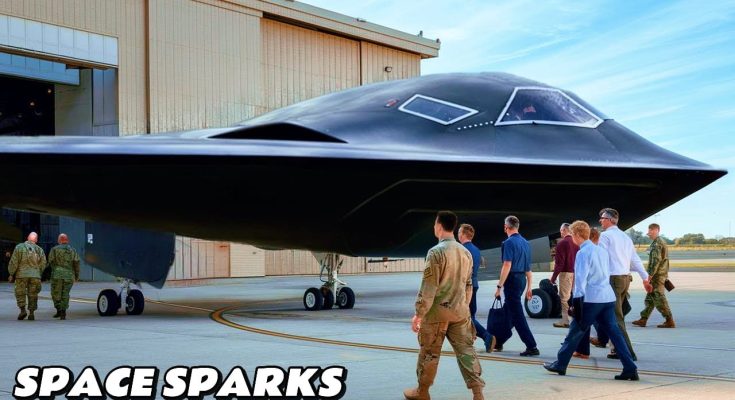The B-21 Raider is the U.S. Air Force’s next-generation strategic bomber, designed to redefine air superiority and usher in a new era of stealth and long-range strike capabilities. This cutting-edge aircraft is poised to replace the aging fleet of B-1 Lancers and B-2 Spirits, serving as a vital part of the U.S. military’s efforts to maintain global dominance in the skies. With its advanced technology, stealth design, and multi-role capabilities, the B-21 Raider promises to reshape the future of aerial warfare.
The Legacy of the B-21
The B-21 Raider takes its name from the historic Doolittle Raid of 1942, where American bombers launched a daring raid over Japan in the early days of World War II. The name signifies the bomber’s role in modern strategic warfare and its commitment to advancing America’s military might in the face of ever-evolving threats. While the B-21 shares the same mission as its predecessors—delivering powerful strikes deep behind enemy lines—the Raider does so with an unprecedented level of stealth, adaptability, and technological sophistication.
Stealth and Low-Observable Features
One of the most defining characteristics of the B-21 Raider is its stealth technology. Designed to be virtually undetectable by radar, the Raider incorporates advanced low-observable features, making it one of the stealthiest bombers ever created. The smooth, clean lines of the aircraft, along with its advanced materials and shaped contours, reduce its radar cross-section, ensuring that it can infiltrate highly defended airspace without being detected by enemy radar systems.
This unparalleled level of stealth is coupled with highly advanced avionics, including the ability to defeat enemy radar and electronic warfare systems. The B-21 is engineered to operate in highly contested environments, where near-impenetrable defense systems and advanced anti-aircraft weapons are in play. Its ability to operate in both nuclear and conventional strike missions makes it an essential asset for any modern military force.
Advanced Avionics and Mission Systems
The B-21 Raider is equipped with state-of-the-art avionics that provide unmatched situational awareness, allowing the crew to detect threats from great distances. This allows the bomber to avoid hostile air defenses and deliver precision strikes on high-value targets. The aircraft features autonomous capabilities as well, meaning it can carry out missions with minimal human intervention, further reducing the risk to personnel and increasing the bomber’s efficiency.
Another significant advantage of the B-21 is its modular design, which allows for rapid integration of new technology and weapon systems. As the landscape of modern warfare continues to evolve, the Raider can be easily upgraded with new systems to stay ahead of emerging threats. This ensures that the B-21 will remain a relevant and formidable weapon for decades to come.
Long-Range Strike and Payload Capacity
The B-21 Raider is designed to operate in long-range strike missions, capable of reaching targets thousands of miles away without the need for refueling. Its extended range makes it an ideal platform for deep strikes into enemy territory, potentially carrying out global precision strikes while staying outside the range of most enemy defenses.
While the full details of the B-21’s payload are classified, it is expected to have the capability to carry a wide array of precision-guided munitions, including conventional bombs, nuclear warheads, and potentially even future hypersonic weapons. Its versatility allows it to support a broad range of missions, from strategic deterrence to highly targeted tactical strikes.
The Future of Global Deterrence
As part of the U.S. nuclear triad, the B-21 Raider will play a crucial role in ensuring the country’s nuclear deterrence capabilities remain credible and effective. The bomber will be capable of delivering both conventional and nuclear weapons, providing the U.S. military with the flexibility to respond to a wide variety of threats, both immediate and long-term.
The Raider is also expected to complement existing bombers, like the B-2 Spirit, and the future B-52 Stratofortress, with its next-generation stealth and advanced mission systems making it an indispensable asset for the U.S. Air Force’s long-range bombing strategy.
Global Impact and Strategic Superiority
The B-21 Raider is not just about technological advancements—it represents a shift in how the U.S. military will approach strategic air operations in the future. With its ability to penetrate advanced defenses, carry out long-range strikes, and deliver precision payloads with stealth, the Raider will ensure that the U.S. maintains air superiority, even in the most challenging operational environments.
Moreover, the B-21 will serve as a deterrent to potential adversaries, showcasing U.S. technological superiority and the ability to strike at the heart of any adversary’s infrastructure, no matter how heavily fortified. Its mere presence in the skies will have a significant psychological impact, sending a clear message that the U.S. is ready to defend its interests, wherever and whenever necessary.
Conclusion
The B-21 Raider is more than just a new bomber; it’s a testament to the future of air superiority and strategic deterrence. With its stealth capabilities, advanced avionics, long-range strike capabilities, and modular design, the B-21 is set to redefine the role of bombers in modern warfare. As the next-generation of American military air power, the B-21 Raider is a crucial piece of the U.S. Air Force’s vision for maintaining global dominance, ensuring that it remains the world’s leading military power for decades to come.



